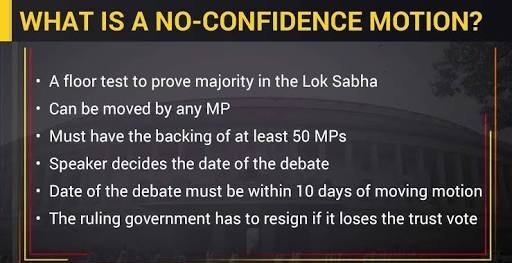Click to know about NO CONFIDENCE MOTION and current scenario
In a parliamentary democracy, a government can be in power only if it commands a majority in the directly elected House. Article 75(3) of our Constitution embodies this rule by specifying that the Council of Ministers are collectively responsible to Lok Sabha. The rules of Lok Sabha provide a mechanism for testing this collective responsibility. They allow any Lok Sabha MP who can garner the support of 50 colleagues, to introduce a motion of no-confidence against the Council of Ministers. Thereafter, a discussion on the motion takes place. MPs who support the motion highlight the government’s shortcomings, and the Treasury Benches respond to the issues they raise.

Today, after 15 years
It is now 15 years since a discussion on a motion of no-confidence took place in the Lok Sabha. The last one was in 2003 when Prime Minister Vajpayee defeated a no-confidence motion moved by Sonia Gandhi. The no-confidence motion to be discussed on Friday will be the 27th no-confidence motion in our Parliamentary history.





